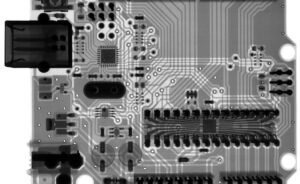When AI Was Invented
Artificial Intelligence (AI) has become an essential part of our daily lives, powering various technologies and impacting industries around the world. But when exactly was AI invented? Let’s delve into the history of this groundbreaking technology and explore its beginnings.
Key Takeaways:
- AI was first proposed as a concept in the 1950s.
- The term “Artificial Intelligence” was coined in 1956.
- Early AI research focused on symbolic approaches and rule-based systems.
- The field of AI experienced both periods of excitement and “AI winters”.
- Advancements in computational power and data availability fueled the recent resurgence of AI.
In 1950, Alan Turing presented the idea of a machine that could exhibit intelligent behavior, which is often considered one of the earliest references to AI. This laid the foundation for further research and development in the field.
The term “Artificial Intelligence” was officially coined in 1956 during a conference at Dartmouth College. This marked the beginning of a more formalized approach to the study of intelligent machines and the birth of AI as a recognized discipline.
Early AI research primarily focused on symbolic approaches, where AI systems were built using logical rules and mathematical symbols. These systems were designed to mimic human reasoning and perform tasks that required intelligence.
**During the 1960s and 1970s**, there was great excitement and optimism about AI. Researchers believed that human-level AI was just around the corner, but progress was slower than anticipated, leading to what was known as an “AI winter” during the 1980s and 1990s.
**Interest was revived** in the late 1990s and early 2000s with the emergence of practical applications like virtual assistants and recommendation systems. The availability of large datasets and increased computational power provided new opportunities to tackle complex AI problems.
The Revival of AI
After a period of stagnation, breakthroughs in machine learning and neural networks sparked a renewed interest in AI. Researchers discovered new techniques and algorithms that could learn from data and solve previously unsolvable problems.
**Machine learning algorithms**, such as deep learning, have demonstrated exceptional capabilities in areas such as image and speech recognition, natural language processing, and autonomous vehicles.
A Glimpse into AI’s Impact
The impact of AI can be seen across various sectors. Let’s explore a few examples:
1. Healthcare
In healthcare, AI is being used to improve disease diagnosis, drug discovery, and personalized treatment plans, ultimately enhancing patient care and outcomes.
2. Finance
AI algorithms are employed in the finance industry for fraud detection, algorithmic trading, and risk assessment, aiding in making more accurate and informed decisions.
3. Transportation
Autonomous vehicles, powered by AI systems, are set to revolutionize transportation by reducing accidents, improving traffic flow, and increasing overall efficiency.
Historical AI Achievements
| Year | AI Achievement |
|---|---|
| 1997 | IBM’s Deep Blue defeats world chess champion Garry Kasparov. |
| 2011 | **IBM’s Watson** wins Jeopardy! against top human champions. |
| 2016 | **AlphaGo**, developed by Google DeepMind, defeats world Go champion Lee Sedol. |
AI continues to advance rapidly, and its future potential is vast. With ongoing research, AI is poised to transform numerous industries, making our lives more efficient, safer, and convenient.
The Journey Continues
It’s fascinating to witness the progress of AI since its inception. From its early conceptualization to the current advancements, AI has come a long way in a relatively short period. As we move forward, it will be intriguing to see how AI evolves and what new possibilities it brings.

Common Misconceptions
1. AI was invented overnight
One common misconception about the development of Artificial Intelligence (AI) is that it was invented overnight. However, the reality is that AI has gradually evolved over several decades. It started with the Dartmouth Conference in 1956, which marked the birth of AI as a field of study.
- AI development has taken place over several decades
- The Dartmouth Conference in 1956 marked the beginning of AI research
- AI has gone through various stages of development, from rule-based systems to machine learning algorithms
2. AI is indistinguishable from human intelligence
Another misconception is that AI is indistinguishable from human intelligence. While AI has made significant progress in certain areas, it still falls short in many others. AI systems are designed to perform specific tasks and are limited to the data they have been trained on. They lack the overall general intelligence and common sense reasoning that humans possess.
- AI is designed for specific tasks and lacks general intelligence
- AI’s performance is based on the data it has been trained on
- Human intelligence exceeds AI capabilities in areas like common sense reasoning
3. AI will replace human workers entirely
One misconception that often arises is the fear that AI will completely replace human workers in the future. While AI has the potential to automate certain tasks and improve efficiency, it is unlikely to replace human creativity, critical thinking, and emotional intelligence in the near future. AI systems still rely heavily on human input and require human oversight.
- AI can automate certain tasks, but human skills are still essential
- Human creativity, critical thinking, and emotional intelligence cannot be replicated by AI
- AI systems require human oversight to ensure accurate and ethical functioning
4. AI is infallible and unbiased
Another misconception about AI is that it is infallible and inherently unbiased. However, AI systems are only as good as the data they are trained on. If the training data is biased or flawed, the AI system will reflect those biases. Additionally, AI algorithms can be influenced by the biases of their human creators, leading to potential ethical issues.
- AI systems can reflect biases present in the training data
- Biases of human creators can also impact AI algorithms
- Ethical issues can arise due to biased AI systems
5. AI will take over the world and pose a threat to humanity
A common but misguided belief is that AI will eventually take over the world and pose a threat to humanity’s existence. While there are legitimate concerns about the ethical and societal impact of AI, the idea of a sentient AI bent on destroying humanity is more science fiction than reality. The development of AI is guided by human intentions and values, and efforts are being made to ensure that it benefits society as a whole.
- The fear of AI taking over the world is based on science fiction rather than reality
- AI development is guided by human intentions and values
- Efforts are being made to ensure AI benefits society and minimizes potential risks

The Origins of AI
The concept of Artificial Intelligence (AI) has come a long way since its inception. Over the years, numerous breakthroughs and advancements have revolutionized the field. Below are ten examples highlighting key milestones in the development of AI.
Alan Turing’s Test
In 1950, computer scientist Alan Turing introduced the concept of a test that measures a machine’s ability to exhibit intelligent behavior indistinguishable from that of a human. This test, known as the Turing Test, laid the foundation for evaluating AI systems.
Siri’s Debut
Siri, Apple’s voice-activated virtual assistant, made its first appearance in October 2011. This AI-powered technology uses natural language processing and machine learning algorithms to interact with users, answer questions, and perform tasks.
Deep Blue vs. Kasparov
In 1997, IBM’s Deep Blue chess AI defeated world chess champion Garry Kasparov. The highly publicized match showcased the incredible progress of AI in strategic reasoning and highlighted its potential in complex problem-solving.
Chatbots on the Rise
With the rise of messaging platforms, chatbots have become increasingly prevalent. These AI-driven conversational agents simulate human conversation, providing automated responses and assistance across various industries, including customer service and e-commerce.
The Birth of Neural Networks
In 1943, neurophysiologist Warren McCulloch and mathematician Walter Pitts proposed the first formal model of an artificial neural network, inspired by the structure and function of the human brain. This laid the groundwork for modern deep learning.
Tesla Autopilot
Tesla’s Autopilot system, introduced in 2015, employs AI algorithms and sensors to enable semi-autonomous driving. This technology uses real-time data, computer vision, and machine learning to navigate traffic and assist with vehicle control.
IBM’s Watson
IBM’s Watson, a cognitive computing system, became widely known after winning the quiz show Jeopardy! in 2011. Watson showcases the potential of AI in knowledge retrieval, natural language processing, and problem-solving at a massive scale.
AlphaGo Defeats World Champion
In 2016, AlphaGo, a computer program developed by Google’s DeepMind, defeated the world champion Go player, Lee Sedol. This victory demonstrated AI’s capability to master complex board games, which was once considered a significant challenge for AI systems.
Computer Vision Advances
Recent advancements in computer vision have enabled AI systems to perceive and understand visual data accurately. From facial recognition technology to object detection algorithms, computer vision has found applications in fields like security, medical imaging, and autonomous vehicles.
Personalized Recommendations
AI algorithms play a critical role in providing personalized recommendations across a range of platforms, including streaming services, e-commerce websites, and social media platforms. These recommenders leverage user data and machine learning techniques to suggest tailored content or products.
From Alan Turing‘s theoretical concepts to the practical implementation seen in various AI applications today, the journey of AI has been filled with remarkable advancements. With ongoing progress, AI continues to shape society, improving efficiency and transforming numerous industries.
Frequently Asked Questions
When was AI invented?
Artificial Intelligence (AI) research dates back to the 1950s when the term was coined at the Dartmouth Conference in 1956. However, the concept of AI can be traced back even further to the works of Alan Turing and other pioneers in the field of computer science.
What is the definition of AI?
Artificial Intelligence refers to the development of computer systems capable of performing tasks that typically require human intelligence, such as visual perception, speech recognition, problem-solving, decision-making, and learning.
Who is considered the pioneer of AI?
While there have been numerous contributors to the field of AI, John McCarthy is often credited as the pioneer of AI for coining the term and organizing the Dartmouth Conference in 1956, which is considered a significant milestone in the development of AI as a field of study.
What were the early applications of AI?
Some early applications of AI included expert systems, which were designed to mimic the decision-making abilities of human experts in specific domains. AI was also utilized in natural language processing, game-playing, and robotics.
What are the different types of AI?
AI can be categorized into two main types: narrow AI (also known as weak AI) and general AI (also known as strong AI). Narrow AI is designed to perform specific tasks, while general AI aims to mimic human intelligence and possess the ability to understand, learn, and apply knowledge across various domains.
Can AI replace human jobs?
AI has the potential to automate certain tasks and processes traditionally performed by humans. While some jobs may be replaced, AI is more likely to augment human capabilities rather than completely replacing human workers. Additionally, the emergence of new job roles related to AI is anticipated.
What are some modern applications of AI?
AI is currently being used in various fields and industries. Some modern applications of AI include natural language processing used in virtual assistants like Siri and Alexa, computer vision in autonomous vehicles, predictive analytics in healthcare, and personalization algorithms used by online platforms.
What are the ethical considerations surrounding AI?
AI raises several ethical concerns such as privacy and security risks, biases in algorithms, potential job displacement, social inequality, and the accountability of AI systems. Ensuring transparency, fairness, and responsible development and deployment of AI technologies are critical considerations in addressing these ethical concerns.
What is the future of AI?
The future of AI holds immense possibilities. Advancements are expected in areas such as machine learning, deep learning, robotics, natural language processing, and computer vision. AI is anticipated to continue influencing various domains, including healthcare, transportation, finance, and entertainment, revolutionizing how we live and work.
How can I get started in AI?
If you are interested in AI, there are several ways to get started. You can begin by learning programming languages like Python and explore courses and online tutorials related to AI and machine learning. Joining AI-focused communities and participating in projects can help you gain practical experience and build a strong foundation in the field.




